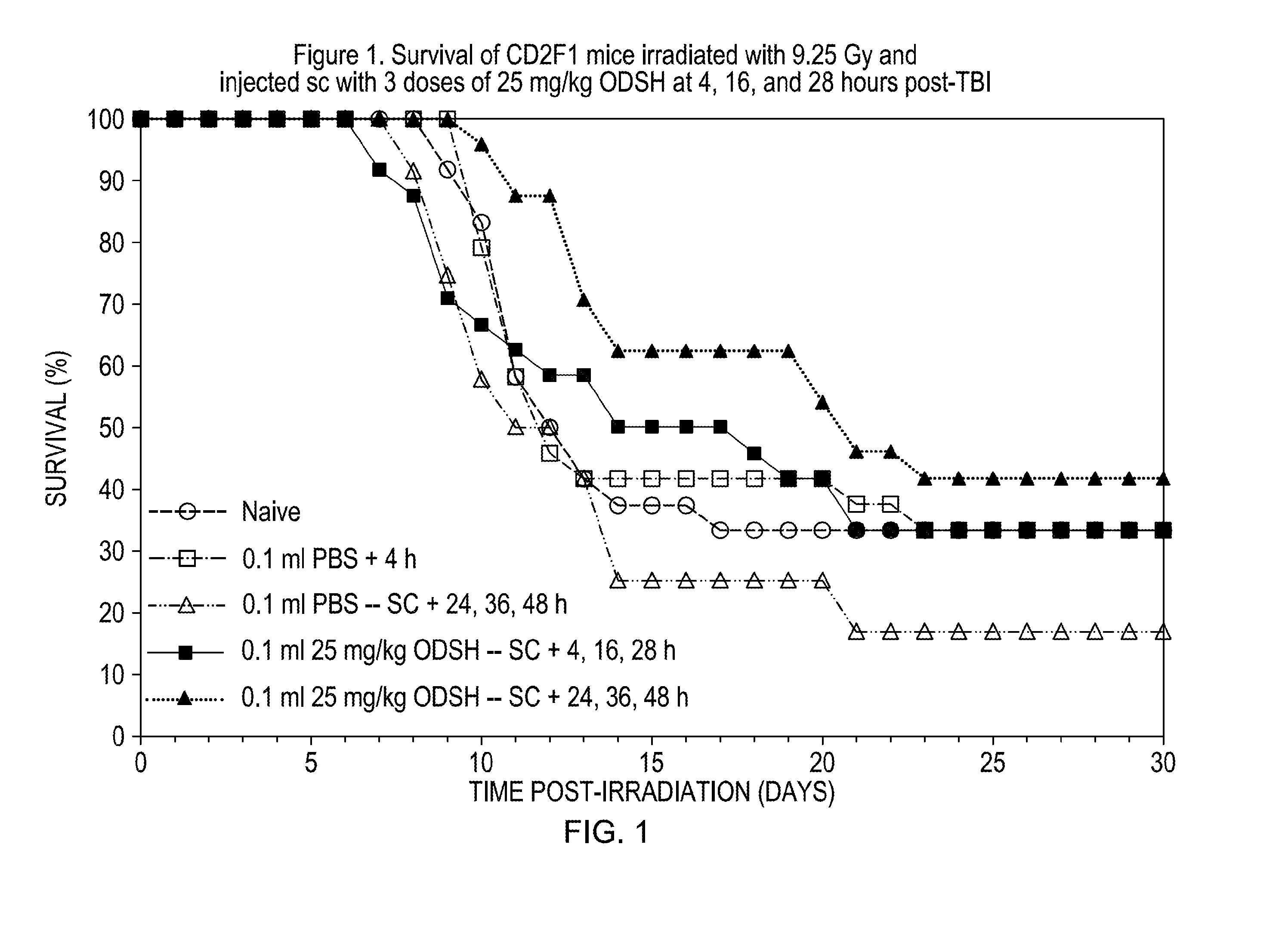Methods of treating and preventing radiation damage
- Summary
- Abstract
- Description
- Claims
- Application Information
AI Technical Summary
Benefits of technology
Problems solved by technology
Method used
Image
Examples
example 1
Survival of CD2F1 Mice Irradiated with 9.25 Gy and Injected Subcutaneously with 25 mg / kg ODSH Post-TBI (Total Body Irradiation)
[0072]This experiment demonstrates that administration of ODSH at intervals following total body irradiation improves survival of mice relative to PBS or the control group without therapy. (see FIG.1)
Materials and Methods:
[0073]CD2F1 male mice (Batch #7586 DOB Dec. 23, 2012) were weighed and animals outside ±20% of the mean weight were excluded. Mice that were within ±20% of the mean weight were randomized into groups of eight animals per box. There were 24 animals per treatment group. The animals received radiation at a dose rate of 0.6 Gy / min in the AFRRI Cobalt 60 gamma radiation facility. Animals were irradiated in Lucite boxes (8 animals / box) and arranged in an array (dosimetry Feb. 25, 2010) using plastic racks. Animals were restrained for no more than 60 min and returned to cages at the end of the irradiation period.
[0074]Post-TBI, animals were untrea...
PUM
| Property | Measurement | Unit |
|---|---|---|
| Fraction | aaaaa | aaaaa |
| Fraction | aaaaa | aaaaa |
| Fraction | aaaaa | aaaaa |
Abstract
Description
Claims
Application Information
 Login to View More
Login to View More - R&D
- Intellectual Property
- Life Sciences
- Materials
- Tech Scout
- Unparalleled Data Quality
- Higher Quality Content
- 60% Fewer Hallucinations
Browse by: Latest US Patents, China's latest patents, Technical Efficacy Thesaurus, Application Domain, Technology Topic, Popular Technical Reports.
© 2025 PatSnap. All rights reserved.Legal|Privacy policy|Modern Slavery Act Transparency Statement|Sitemap|About US| Contact US: help@patsnap.com

